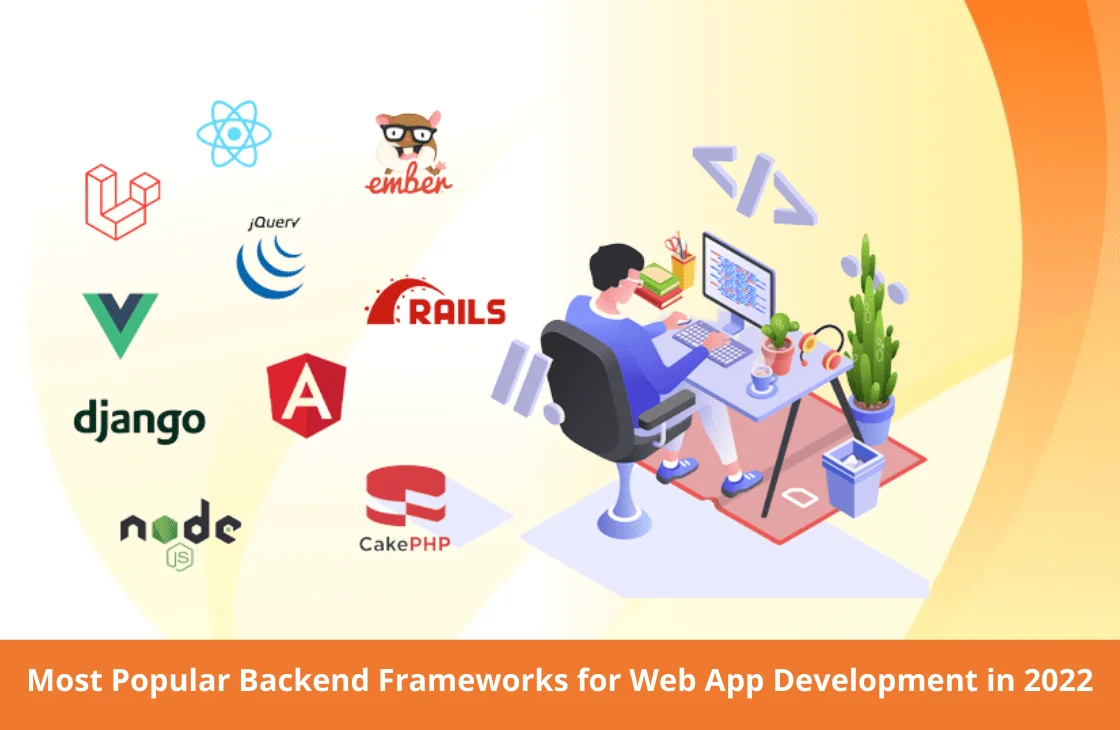Web applications have a common idea at their centre that the user is looking for something specific, and they lean towards the web application that serves that need. Users have their expectations when they approach any web application, and the one with the best interaction, while saving their efforts, leaves a long-lasting impression. Meanwhile, a similar competition is among the variety of backend frameworks that are ever-evolving to create the most impressive web applications. There are many options online to choose a backend framework best suited for yourself. But the question is, which one to choose? Before we move on to that question, let’s revise what is a backend framework and why are we using it in the first place?
What is Backend Framework and Why to Use it?
The backend Framework is a set of modules and tools that work on the server side to build the architecture of a website. The primary goal of using a backend framework is to automate outputs significantly with the help of software development functions to bring a better experience for the user. The best frameworks make a developer’s job easier by reducing the need of creating and configure everything from the beginning. Even if they share the same benefits of time-saving, integrations, scalability, they have other pros.
Let’s discuss the most popular backend frameworks for web app development in 2022 and make your next choice a skilful one.
1. Django
One of the best Python-based Web frameworks, Django is open-source and free to use. It is recommended for startups looking for high-quality web design. To make it clear, here is the fact that StackOverflow Developer Survey put Django at the top of the list of most wanted web development frameworks in 2021.
It successfully defends against SQL injections and XSS by default. Not forgetting the part that it can deal with high traffic demands without letting any of your users suffer, even for a moment.
It makes the development process quick and keeps an open window for SEO-friendly URLs.
2. Ruby on Rails
Ruby on Rails facilitates the developers to use patterns like Model View Controller and Don’t Repeat Yourself.
This one is also open-source and runs its tests on the code to save time and effort.
Scaffolding is one of its features that allow developers to decide how an app database should work, and it automatically creates necessary code.
Its automatic testing feature makes it easier to expand the code without sacrificing the quality.
3. Express
This adaptable and lightweight Node.js web app framework is popular among big companies like IBM, MySpace, and Uber. Numerous standard Node.js features can fit anywhere in the code, bringing a high-quality website app. Its templates for the server side is handy and is a full-stack JS framework that makes it easier for you to make your job done with less number of developers involved. It also presents an advanced routing system allowing preserving a webpage’s state using URLs.
4. Flask
Another preference of Python developers is Flask. Its lightweight design allows you to work with fewer abstraction layers, thus creating MVP quickly. It has an in-built development server to debug the code in less time, and it deploys as a microservice, reducing the need for lengthy codes every time.
Completed with templates, it can make your web apps develop and deployed in no time. It is also quick at adopting new features and keeping its users at the front of the evolving technologies.
5. Laravel
We can’t proceed without mentioning the security this framework offers. It offers salted and hashed password security to the web apps, immune to SQL injections. The framework uses readymade SQL statements to protect passwords from any injections and the Bcypt Hashing Algorithm to create encrypted passwords.
CSS and JS code templates make it comfortable to create codes from simple to complex without losing their efficiency. Object Relational Mapping makes things easier when developers can build database queries using PHP syntax without writing SQL code.
It also offers neat testing advantages by providing PHPUnit support alongside a prepared phpunit.xml file. Its mailing services are top-notch, and a simple API working with the SwiftMailer library completes it.
6. Gin Gonic
If the performance had been the biggest issue with your web apps earlier, Gin Gonic is the perfect solution. It has the most important libraries and features, that makes it popular among the developers for creating high-performing APIs.
Its error handling capabilities are exceptional. When an HTML request is made, it collects all the errors, and a middleware sends them via the network in a log file. It is easier to make middleware with Gin, therefore any error resolves rapidly, making the website run seamlessly.
Putting it all together, you have seen here some of the most popular backend frameworks for Web App Development in 2022, and each one of them has something different to offer. Even if making a choice is difficult for you, consult an expert to make the right choice. Since every choice involves a vision for the website and framework for at least five years, and all the frameworks listed here will evolve during that time.





